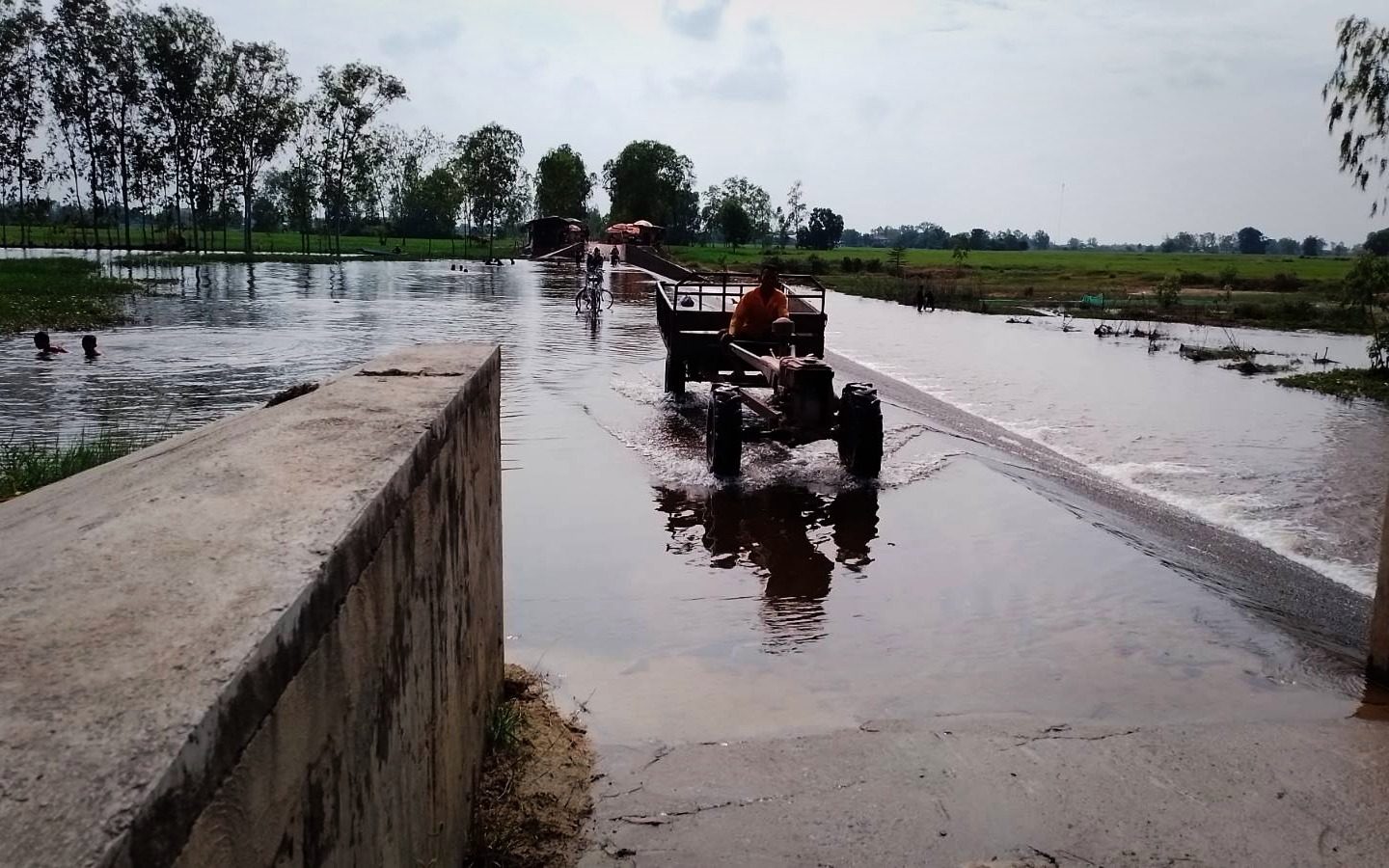Farmers are struggling to harvest their rice crops thanks to late rains this year, as they already face low sales prices.
Rainy season is expected to finish in early December as opposed to the end of October, according to Mao Hak, the director of the Tonle Sap Authority at the Ministry of Environment. La Niña — a weather pattern originating in the Pacific Ocean with wide-ranging ripple effects — has extended the duration of the rainy season and made this year’s rainfall more extreme, with roughly 50% more fallen since the start of the rainy season as opposed to the yearly average.
Nheat Sreyhom, 31, a farmer in Banteay Meanchey’s Svay Chek district, said she managed to harvest most of her own rice at the last minute, but her neighbors weren’t so lucky.
“There’s a half-hectare of the rice field that has yet to be harvested,” she said. “But some of the farmers in the village have not harvested their rice yet at all.”
“It’s hard to say that it is profitable [this year],” she added.
The heavy rain contributed to severe flooding nationwide, according to a National Disaster Management Committee report released in November. Around 159,021 families have been affected, with 5,676 evacuated and 15 deaths. Nearly 116,000 hectares of rice farms have been destroyed.
The combination of late rains, flooding, high production costs and low rice prices have made it a tough year for Sreyhom and other farmers in her village.
Over the decade that she’s made a living from rice farming, she used to be able to sell rice for about $0.25 per kilogram; now it’s dropped to $0.2. Heavy rains have prevented many in her village from harvesting their crops.
She said the flooding doused about one-third of her 9-hectare farm during the heavy rains in the middle of September — an amount of flooding she’s never seen before.
Banteay Meanchey province has seen nearly 23,000 hectares of rice fields destroyed in flooding so far.
Next door, Battambang province was among the most affected by flooding, with 29,384 families affected and 27,233 hectares of rice fields destroyed, per the National Disaster Management Committee.
Provincial governor Sok Lu said rice farmers have encountered more challenges than in years past because of the heavy rain, with rice fields submerged and destroyed starting in late September — and now muddy soil that makes it difficult for tractors to harvest.
“It might be hard for them to harvest on time,” he said.
When it comes to low rice prices, however, farmers in Battambang and Banteay Meanchey have been warned by the Ministry of Agriculture to refrain from criticizing the government, which claims it has already dispatched officials to address the problem.
On November 15, the ministry issued a statement in response to social media posts from farmers in the two provinces lamenting the lack of government assistance to farmers in finding fair market prices for their harvest.
The Banteay Meanchey police also detained and sought an apology from a civil servant in Svay Chek district who criticized the government over low rice prices in a Facebook live video, accusing him of incitement and disrespecting the governor.
Rains are meanwhile expected to continue. The Ministry of Water Resource issued a statement on November 22 forecasting a deluge from November 23 to 29, with strong winds and big waves expected along the coastal provinces.
Preah Sihanouk province spokesperson Kheang Phearum said rain was falling as of Thursday but had not yet caused any floods, and the traffic in the area is normal.













